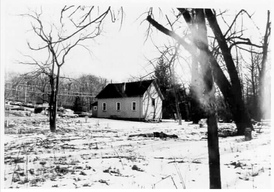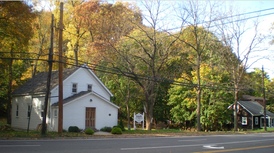Lakeville
Manhasset, a hamlet in the Town of North Hempstead, had a fairly large, steadfast African American settlement in the early 19th century. This community was unique due to its size and composition. The population was colonial in origin, comprised of people who were both born into slavery and "born free." By the third quarter of the 18th century, free African Americans had established a community along Valley Road near Lake Success that was known variably as Success, Lakeville at Success, and Valley Road. Approximately 150 people were listed as residents of the community on the 1790 Federal Census.
The Lakeville AME Zion Church was organized in 1821 and served as the center of the community. The congregation first met in the Little Neck home of Moses Coss. This continued after he moved to the Lakeville community a few years later. A building was constructed in 1832 on land purchased from Reverend George Treadwell and the congregation grew to 35 people.
By the 19th century, more than 30 buildings lined both sides of Valley Road, including houses, shops, and the church. The community included African Americans, Matinecock Indians, and people of mixed ancestry. Data drawn from the 1850 Federal Census indicates that many Lakeville residents were employed on the large estates of the North Shore.
Descendants of those early settlers are still connected to the area and residents have fought to preserve the Lakeville settlement. Now known as the Valley Road Historic District, the Lakeville AME Zion church, a cemetery, and several historic homes, located on the west side of Valley Road, are listed on the National Register of Historic Places.
This entry contributed by the
Center for Public Archaeology at Hofstra University
Related Media
Video

|
Lynda Day, Brooklyn College Professor of Africana Studies, discusses the importance of preserving historically black communities like Lake Success for current residents.
|
Images

|
This image of the church was taken in 1975 and shows the scale of the building looking southeast.
|

|
The Valley Road Historic District, listed on the National Register of Historic Places, preserves African American history and helps maintain the community connection to this landscape.
|

|
This image was taken in 1976 as part of the nomination for listing on the National Register of Historic Places. It includes the Lakeville AME church looking northwest.
|

|
A current view of the Lakeville AME Zion Church.
|







